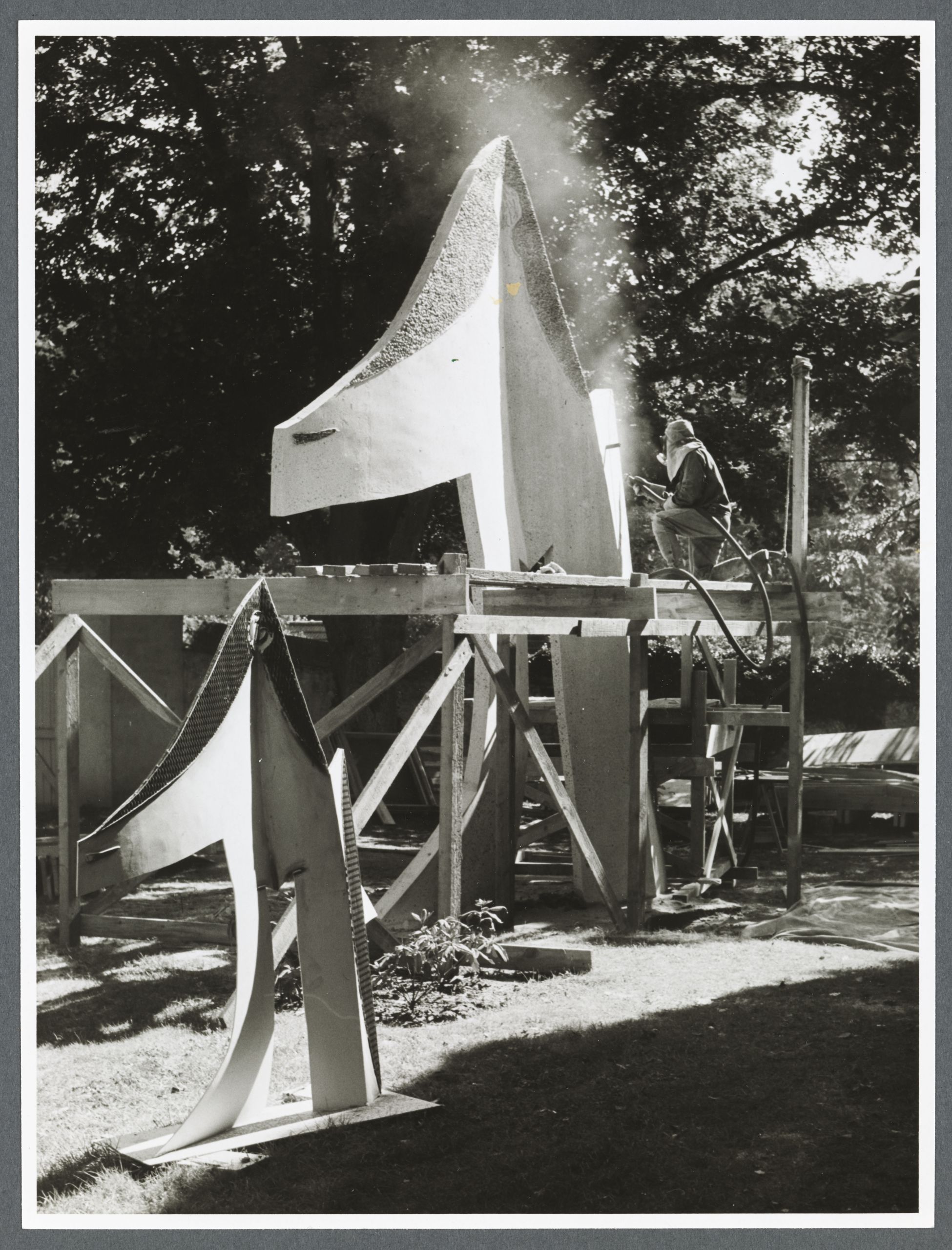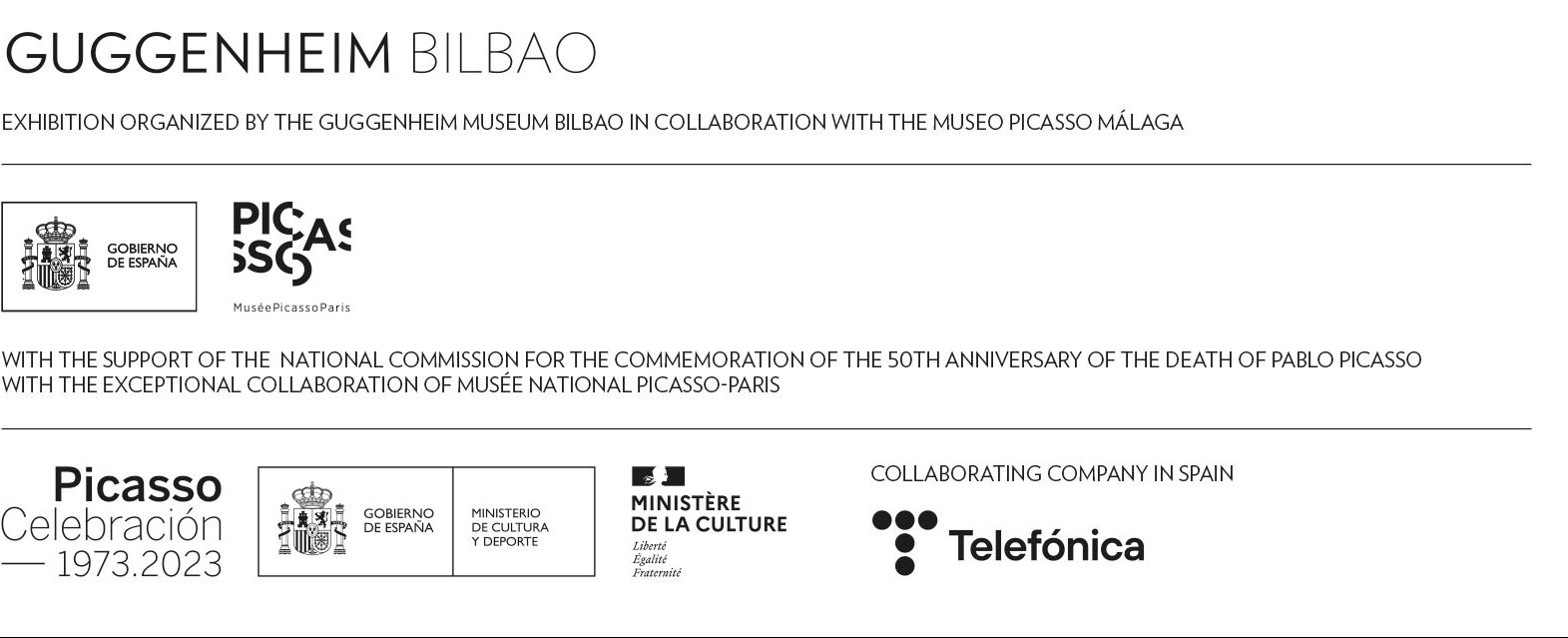
Pablo Picasso
Sablage de la sculpture de la "Femme aux bras écartés",
Prieuré de Saint-Hilaire, Chalo-Saint- Mars, 1962 Anonyme (à partir de 1952)
© Droits réservés. © Sucesión, Pablo Picasso, Madrid, 2023.
In 1954 Picasso was in Vallauris, and in his desire to transfer his fragile, folded, and cut paper and cardboard sculptures that blend painting and sculpture to a more durable medium, he embarked on another important collaboration, this time with welder Joseph-Marius Tiola (b. 1902; d. 1986). Thanks to Tiola’s knowledge of metal carpentry, Picasso’s figures were made into welded sheet metal, onto which the artist painted the defining touches and features. At La Californie, Picasso created more than a hundred pieces using this technique, including the sculpture Woman with Child (1961), which can be seen in gallery 208.
In the 1960s, Norwegian artist Carl Nesjar (b. 1920; d. 2015) became yet another of Picasso’s essential collaborators, as his innovative technique of cement engraving allowed Picasso to translate his sheet metal sculptures into monumental pieces made from a mixture of gravel and cement. In his process, Nesjar first enlarged the piece and then used high-pressure sandblasting to erode the surface and generate the necessary details. The sheet metal work Woman with Outstretched Arms (1961), is one of the sculptures by Picasso to which Nesjar applied this technique, now at the Musée d’art moderne de Lille Métropole, France.
Sponsored by:


